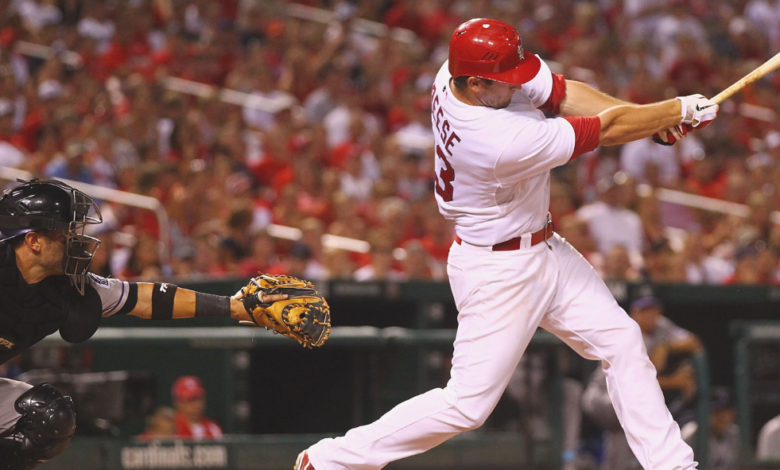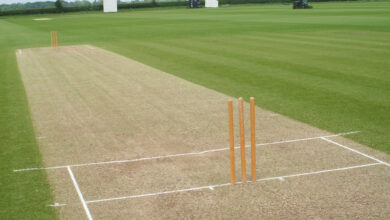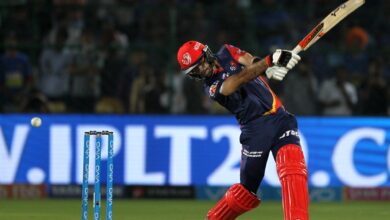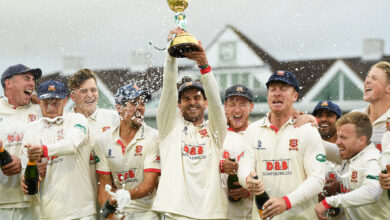
Nine months ago, the NFL announced its new MLB schedule in that classic, subtle manner for which it is so well-known worldwide.
With a nationally aired special on two networks that showcased every game, broken down by division, on screen as well as — per a league TV commercial — “Deep examination of the most important matchups and primetime games.”
All well, then. In the meantime, baseball was going on, and two months later, it unveiled its own 2024 MLB schedule.
Not that there’s a problem with it. To be honest, you have no clue if you take a look at those two things and decide they demonstrate how insignificant people find the baseball schedule to be.
“I tell you, I get more letters on this topic than any other,” said Chris Marinak, chief operations and strategic officer of MLB.
Indeed, he did say “letters”. Like in handwritten letters from a wide range of individuals outlining a variety of inventive alternative MLB schedule forms that would “solve” every baseball issue, including travel, rivalry-building, and more games versus the Yankees for everybody.
We hate to inform you that almost none of those formats would really function in real life. Nevertheless, Marinak finds them admirable.
He claimed that people were drawn to the topic because it was “just like a cool math problem.”
That being said, it’s time once more to examine the Major League Baseball calendar for 2024, as we now know how much you value baseball’s intriguing scheduling jigsaw puzzle.
While you’re still processing the 77 chicken wings you had at your Super Bowl party, this is the ideal way to prepare for spring training. Is that not the case?
How it works

In the unlikely event that you missed the schedule column from the previous year—not to mention the season itself— Let us examine the significant differences between the prior timetable and the structure that was introduced in 2023.
Number of teams played
New Schedule : 29
Previous Schedule : 19-20
Yes, all the clubs now play all the other clubs. Will the Dodgers led by Shohei Ohtani be your team’s opponent this season? Ohtani plays on this side of the Pacific, and it will this year and every year after that. What a notion.
Inter League Matches
New Schedule : 46
Previous Schedule : 19-20
Interleague play was something in between a crazy experiment and a curiosity when it initially made its appearance in our life in 1997. Not any longer. Right now, it’s propelling business (more on that in a moment) and the main events on this itinerary.
Have you always wished you could have seen Aaron Judge perform live? Does your city belong to the National League? Hello, wonderful news. Unless he is unable to make it, in which case next year is certain to see the judge in your town! Every club in the other league gets to visit every other team once every two years under this arrangement.
It is known as “showcasing the stars.” That is something that the other sports have done for pretty much forever through deliberate scheduling. It is now baseball’s turn.
Division games
New schedule : 52
Old schedule : 76
Games versus rest of league
New schedule : 64
Old schedule : 66
Every team played each of the other four teams in its division an astounding 19 times apiece under the previous system, the cherished “unbalanced-schedule” period. Far too many! There are now just 13 total: two home series and two away series annually.
Will there be more travel as a result of that change—more miles and hours spent on planes? Yes, that’s right. (There will be more on it soon.) Does the timetable now feel more equitable, though? It does—a few instances excepted. This is the reason why:
In the past, teams from separate divisions that were competing for a wild-card position would often face each other in somewhat more than half of their games. That figure rises to more than 75% with the new format. That appears to be beneficial.
In actuality, it achieves the following: winning 90 games in the AL East now equates to winning 90 games in the AL West. It’s also almost time.
What baseball took up from the schedule the previous year
Is there anything in life, including sports, that appears exactly the same on paper as it does in real life? Be honest, not much! This new MLB schedule has now been followed by baseball for a whole season. We believe that everyone learnt the following:
We live in a star-driven cosmos, so it was an attendance bonanza. What transpired, therefore, when baseball at last discovered a more effective means of getting its stars in front of fans—by putting every team on the field for the first time ever—? The turnstiles began to whirl and did not stop. That’s the thing.
The previous season saw 11 weekends when the total Friday–Sunday attendance for all sports reached 1.5 million. Between June 9 and August 20, a period of 11 weeks, comprised nine of such weekends. In the preceding four whole seasons put together, there had been five Saturdays with that level of attendance.
Overall attendance increased by nearly 9%, marking the biggest increase in thirty years. Naturally, 2022 was a low year because of the lockout that hung over the previous season. However, upon closer examination of those 11 significant weekends, the star-power ratio became evident.
Six wild-card clubs made it to October, thus it was officially more equitable. How many of them originated from the two Central divisions, do you know? That would be nothing.
We’re still going to argue it was a good thing, even at the risk of setting off way too many We Hate Your Team or maybe We Hate Your Central Time Zone tale comments underneath. Were there any arguments against their being the two weakest main divisions? It is not supposed to be.
However, baseball was actually punishing clubs in excellent divisions with harder schedules under the previous scheduling arrangement. It was also giving clubs with easier schedules who were in terrible divisions rewards. Is that how you manage your sport sensibly? Come on. How?
The Blue Jays faced 94 games in 2022 with opposition that was.500 or higher. It simply required the Guardians to play 68. Playing just 71 games, the Mariners were in the same wild-card free-for-all as Toronto. Does that seem reasonable to you?
Here’s a more illustration: Two 100-loss clubs have been crammed into one division by the AL Central or NL Central in four of the last five complete seasons. The top clubs in that division would have played 100-loss division doormats for roughly 25% of their MLB schedule under the previous imbalanced model. In the new structure, that is reduced to sixteen percent. It’s far from flawless. That will also be covered in this article. However, with six wild cards in a sport these days, it’s critical to design a MLB schedule that balances that imbalance.




